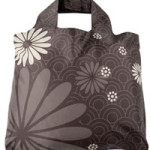Green Design and Feng Shui on a Budget, and What’s Coming Next
 Recently I had a chance to ask a few questions of Kim Nadel, NCIDQ certified interior designer, LEED Accredited Professional, and co-founder of the Brooklyn-based NICHE environmentally smart design group. Kim is currently on the MFA faculty of the New York School of Interior Design teaching Green Design, and co-authored The Green Pages: The Contract Designer’s Guide to Environmentally Responsible Materials and Products.
Recently I had a chance to ask a few questions of Kim Nadel, NCIDQ certified interior designer, LEED Accredited Professional, and co-founder of the Brooklyn-based NICHE environmentally smart design group. Kim is currently on the MFA faculty of the New York School of Interior Design teaching Green Design, and co-authored The Green Pages: The Contract Designer’s Guide to Environmentally Responsible Materials and Products.
Kim was chosen by Hospitality Design magazine as one of the top 20 leaders in the industry to influence design in a positive direction. She has enjoyed lecturing throughout the country to designers and architects on green living since 1995 and her work has been published in a variety of publications including Interiors and Natural Home and Garden. Kim’s broad knowledge allows her to work within a diverse range of creative projects that promote green living and inspire others to create in a sustainable way. Presently Kim is incorporating the principles of Vastu into her work, and her designs are featured in Kathleen Cox’s Vastu book Space Matters.
What is the single most important thing individuals can do (in terms of interior decorating) to improve the feng shui or vastu of their home, if budget is a primary concern?
Kim: I would say the most basic things to do are one, to clear out the clutter, and two, to make sure everything is in working order. One particular area to work on is the entry area — it is so important because it is instrumental in determining how people perceive you, and also what you yourself experience as you enter your own personal space. It is important to clear the clutter there and have appropriate storage (a place for keys, etc.). I usually place a mirror at the entry.
I asked my Feng Shui consultant, Sanna Plaskon, to elaborate on one thing people can do in terms of interior decoration. “In terms of budgetary concerns, everything begins and ends in the bedroom because we spend most of our sleeping hours there – this is where we go to relax and recharge. Furniture placement is very important – where the bed is positioned is critical. “It is best to keep the electronics, such as the TV, in a storage cabinet to resist that visual pull,” advises Sanna.
What can individuals can do (in terms of interior decorating) to reduce the environmental impact of their home, if budget is a primary concern?
* Try energy-efficient lightbulbs and mix the different light sources in each room.
* Purchase used furniture, i.e. antiques, and/ or purchase local furnishings to decorate your space.
* Reduce your environmental impact by purchasing local products which minimizes packaging and freight pollution.
* Existing furniture can be updated by either refinishing, repainting, applying another material, like wallpaper, or adding interesting hardware.
* Purchase pieces that are multi-functional are longer lasting because they can be moved around to different rooms, like my coffee table with scoop, which acts as a seat or bench, or a coffee table, or both!
What are the biggest challenges you face when a residential client approaches you for help in “green” decorating?
When a client approaches me for green design, I already have a receptive client. They are ‘envies’ themselves and are open to new ideas. It’s all about having that change in consciousness — having that inner lens with which to make priorities that make sense simultaneously for the individual and the planet.
I would say that the biggest challenge is finding a contractor that understands and has the knowledge to implement a green renovation. Here’s a simple example — one client had hired a contractor, (BK – “before Kim!”), to plaster her walls in her living room, and since the contractor didn’t seal off the doors and openings to the other spaces, a large amount of plaster dust permeated a thin layer throughout her entire house!
You’ve been a pioneer in the burgeoning “green” design industry, consulting for homes, businesses, hospitals, and spas. As awareness grows, how do you see the market changing in the next few years?
It is easier to locate eco-friendly materials, fabrics, etc to work with now as opposed to five years ago. Because of the green buzz, I have found that almost all companies have at least one earth-friendly line (or are working toward a green line in the near future), because they realize they will be behind in this competitive market.
Yet, I have never found green products to be more expensive across the board, except for building products, which are inexpensive to start with. For example, plywood is so cheap, but wouldn’t you spend twice as much to purchase a more environmentally-sound product? For example, formaldehyde-free plywood vs. toxic plywood, or waste-wood plywood vs. luan mahogany plywood from exploited rainforest land? Although I focus on green products, and I continue to do research to help companies to re-green their products, I think we are still 10 years away from a true public awareness or a real general population eagerness for things like Anna Sova’s chem-free paints, earth-friendly carpets, solar panels, etc.
Also, it is important to do your research, or have others help you navigate…I have been tracking materials for 15 years, and I can decipher between the line of green-washing and legitimate progress.
You’ve started your own line of furniture, which has been featured in the book “Space Matters.” What’s up next for you, design-wise?
I recently launched a new look to the furniture line with the introduction of new finishes. I wanted to experiment with an eco-friendly concrete because the material can be molded to create the curves and scoops, so I searched for an eco-friendly material that is lightweight and has a high concentration of recycled content, and found this newly conceived version in Colorado.
It’s 30% lighter than conventional concrete. What is so fabulous about this material is that it does not contain portland cement – the main ingredient that is the cause of most of the CO2 emissions in the design/build industry, rather, it is ceramic based. I also wanted the versatility of an indoor-outdoor line, and the concrete is perfect for outdoors and beautiful enough to go indoor applications. Now, I am working on a soft line of furniture (upholstered) that is green, with lasting value, that can be disassembled and recycled, and can be also be placed indoors or outdoors. I am always dragging my chaises outside for parties…
As a designer, there is a dichotomy for me, which is: do we need more stuff to be created in the world… don’t we have enough furniture to work with? Yet I have a desire to create and to create useful products with lasting qualities and value.
Read more about Kim Nadel and her line of eco-friendly furniture here.


2 Comments